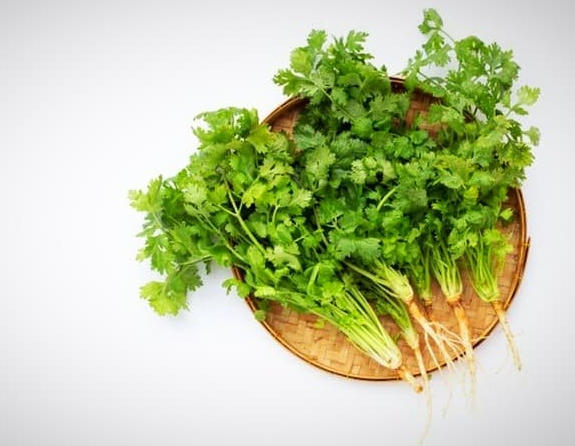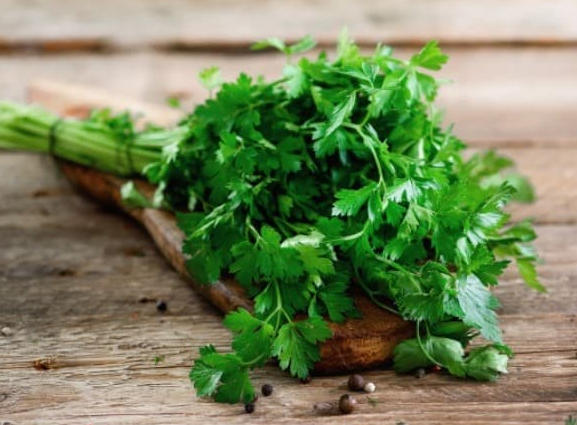Planting and maintaining the “parsley” plant
While parsley is less valued than other vegetables, it is considered one of the most important vegetables. Additionally, this plant is used to freshen the mouth.
Dark green transparent leaves make this plant an edible vegetable. This straight-rooted plant reaches a height of one meter. This plant’s roots, which reach up to 160 cm, are not edible or nutritious. All kinds of foods can be prepared with parsley plant, both fresh and dried. There are both wild and cultivated varieties of this plant. There are cuts on parsley leaves, and the upper and lower leaves of the parsley stem differ from each other. The flowers of parsley are small and green in color, and its fruits are small and green in color, with a fragrant taste.

Here are the parsley plant’s climate requirements:
First of all, before planting a plant, one should be aware of the climatic requirements for growing that plant because if this issue is ignored, the desired result will not be achieved. Therefore, if you are planning to plant a plant, find out what factors it needs and begin cultivating it.
Plant parsley at the right time:
It is possible to grow this plant in any type of weather, but it performs best in cool temperatures. In temperate and warm regions, parsley should be planted from early to late autumn. Planting can also be done in colder regions after the winter heat and cold have passed, which is in the early to late spring.
Parsley planting exposure:
This fragrant plant prefers the shade over the sun due to its high resistance to cold.
Water the parsley plant as follows:
Parsley is highly sensitive to drought, so we recommend watering it daily to grow a fresh and lively crop. The soil of the parsley bed should always have enough moisture, but not be completely wet. Since parsley’s water needs are reduced in the cold season, be sure to let the soil of the plant dry before watering and then water again afterward.
Parsley plant fertilization rate:
The parsley plant should be fertilized once a month using general fertilizer, and compost should be added to the soil before planting to increase the quality of the plant and soil nutrients.
Pests and diseases: how to deal with them
Carrot and celery maggots, rotting of the main stem, and spots on the leaves are some of the most common pests of parsley. Pick the leaves that are affected by these pests, reduce irrigation, and remove mosquito worms from the plant to prevent the stem from rotting and control the spots on the leaves.
Planting parsley seeds:
In moderate climates, parsley grows well for two years, but in cold weather, its growth time changes to one year.
How to plant parsley:
Parsley seeds can be prepared at home in a tray, and seedlings or sprouts can be transplanted into the main bed after three leaves appear. A major advantage of this method is that the seeds can be prepared in controlled conditions and transported to the mainland once the weather is favorable. As a result, time is saved and the product is obtained.
Seeds for direct planting of parsley:
The seeds of parsley can be directly cultivated in the main substrate using this method. It is therefore best to plant parsley directly after the last frost if the weather conditions are favorable and if the temperature is extremely cold, the desired result will not be achieved.
Secondly, choose a location that receives sunlight at least during some hours of the day, and ensure that it is in a suitable area. In addition, if you plan to plant in a pot, you can place it next to the window to receive morning sunlight. In the garden or in pots, parsley grows well.
Prepare the soil after choosing the area. It is best to plant parsley in relatively soft, loose soil that is full of nutrients and compost, and has a pH level between 6 and 7. If the soil is too acidic, test its pH before anything else, and add some lime if necessary. Making a suitable soil involves mixing about 50% potting soil with 50% compost, since this mixture facilitates transplanting small roots of parsley and allows for easy light permeability.

Multiplying the seeds is the second step
1- Soak the seeds in soapy water at this stage. Add very small amounts of dishwashing liquid to lukewarm water and stir until completely dissolved. Let the parsley seeds soak in this liquid for an hour. Dishwashing liquid and hot water will cause the hard outer covering of the seeds to crack. The seeds will grow faster if you do this.
In step 2, wash the seeds in another bowl of lukewarm water, then strain out the dishwashing liquid solution and water, and pour them back into the bowl until there are no traces left. Be sure not to leave any dishwashing liquid behind and get ready for the next step. Let the seeds soak overnight in another spa bowl.
After soaking the seeds, pass them through a strainer and dry them. As soon as you remove them from the water, place them on a piece of paper and when they are dry, they are ready to be planted.
You should sow parsley seeds earlier than the due date if you want to start your work faster. Plant them in small pots and water them daily. In this way, the seeds will have enough time to germinate.
Planting the seeds is the third step
Usually the best time to plant seeds is at the beginning of spring, which is around March or April.
Make holes in the garden using a small spade with a distance of approximately 25 to 30 cm so that each row has enough space between the planting holes. The seeds should only be covered by 1 to 1.5 cm of soil, so do not increase the depth of the holes.
If you intend to grow parsley by grafting. When the plant has reached at least eight centimeters in height after the last frost, you can move it from the pot to the garden.
In order to grow vertical and wide roots, parsley needs to be watered at least once a week. You may also have to water more on very hot and dry days. If you have planted your parsley in a pot, you should keep the soil moist at all times. We recommend installing a drip irrigation system if you cannot water it regularly.
The drip irrigation system is one of the most advanced methods of irrigation in agriculture, in which water is applied to plants in drops at low pressure, regularly irrigating around their roots. This method saves water, which is one of its advantages.
The next step is to remove weeds to prevent them from combining with the parsley plant and absorbing its nutrients, as well as preventing sunlight from reaching the plant. Sprinkle mulch around the plant and remove any weeds that grow between the parsley bushes to prevent weeds from growing.
When the parsley plant is growing, prune its extra bushes and remove the smaller, unhealthy plants around it from the soil with a pair of scissors. Using a small shovel, you can even remove these seedlings from the soil and move them elsewhere.
Harvesting parsley:
It’s time to harvest the parsley. A set of three fully grown parsley leaves means they’re ready to harvest, so gently pluck them from the outer stems of the plant, just above the ground. By harvesting the leaves from the top of the plant, you will reduce the yield of your crop, so harvest the parsley by the stem and be careful not to remove the roots from the soil to prevent the plants from becoming deficient in nutrition.
Maintenance of parsley plants:
Dry or freeze parsley leaves and store them in a closed container for later use. This will prolong the taste of your stored parsley for a year.
